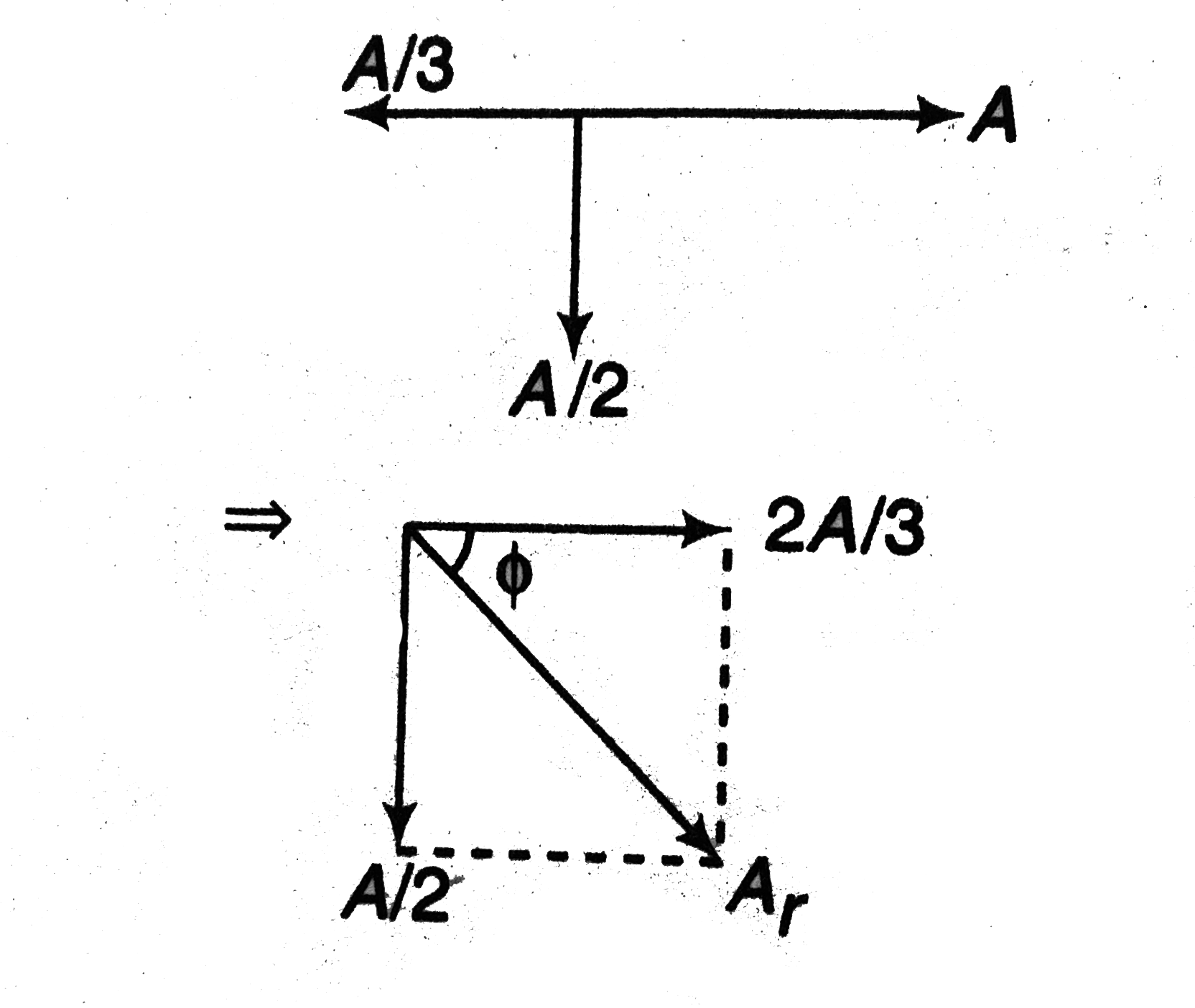Three component sinusoidal waves progressing in the same directions along the same path have the same period byt their amplitudes are A,A2andA3. The phases of the variation at any position x on their path at time t=0are0,−π2and−π respectively. Find the amplitude and phase of the resultant wave.
The correct Answer is:A, C, D
Resultant amplitude

Ar=√2A32+(A2)2
=56A
tanϕ=−A/22A/3=−34
or ϕ=tan−1(3/4) .
Topper's Solved these Questions
- SUPERPOSITION OF WAVESBOOK - DC PANDEYCHAPTER - SUPERPOSITION OF WAVESEXERCISE - Level 2 Single Correct
15 Videos
- SUPERPOSITION OF WAVESBOOK - DC PANDEYCHAPTER - SUPERPOSITION OF WAVESEXERCISE - Level 2 More Than One Correct
6 Videos
- SUPERPOSITION OF WAVESBOOK - DC PANDEYCHAPTER - SUPERPOSITION OF WAVESEXERCISE - Level 1 Subjective
24 Videos
- SOUND WAVESBOOK - DC PANDEYCHAPTER - SOUND WAVESEXERCISE - Exercise 19.7
4 Videos
- THERMOMETRY THERMAL EXPANSION AND KINETIC THEORY OF GASESBOOK - DC PANDEYCHAPTER - THERMOMETRY THERMAL EXPANSION AND KINETIC THEORY OF GASESEXERCISE - Medical entrance gallary
30 Videos
Similar Questions
Three sinusodal waves having amplitudes a, a/2 and a/3 are superposed. They have the same period and thelr phase are 0, π/2 and respectively. Find (i) The resultant amplitude and phase (ii) Draw a sketch to show the resultant wave.
View SolutionIf the two particles performs S.H.M. of same initial phase angle but different amplitudes of individuals, then the resultant motion initial phase angle depends on
View Solution
Knowledge Check
A sinusoidal wave travelling in the same direction have amplitudes of 3 cm and 4 cm and difference in phase by π/2. The resultant amplitude of the superimposed wave is
A7 cmB5 cmC2 cmD0.5 cmFive sinusoidal waves have the same frequency 500Hz but their amplitudes are in the ratio 2:1/2:1/2:1:1 and their phase angles 0,π/6,π/3,π/2andπ, respectively . The phase angle of resultant wave obtained by the superposition of these five waves is
A30∘B45∘C60∘D90∘Five sinusoidal waves have the same frequency 500Hz but their amplitudes are in the ratio 2:1/2:1/2:1:1 and their phase angles 0,π/6,π/3,π/2andπ, respectively . The phase angle of resultant wave obtained by the superposition of these five waves is
A30∘B45∘C60∘D90∘
Two sinusoidal waves y1,(x,t)andy2(x,t) have the same wavelength and travel together in the same direction along a string. Their amplitudes are ym1= 4.0 mm and ym2=3.0mm, and their phase constants are 0 and π/3 rad, respectively. What are the amplitude ym', and phase constant of the resultant wave? Write the resultant wave in the form of Eq. 16-63.
View SolutionTwo sinusoidal wave having the same frequency and travelling in the same direction are combined. What is the amplitude of the resultant motion if their amplitudes are 3cm and 4cm and they differ in phase by π/2 radian?
View SolutionTwo waves of amplitudes 3mmand2mm reach a point in the same phase. What is the resultant amplitude ?
View SolutionTwo plane monochromatic waves propagating in the same direction with amplitudes Aand2A and differing un phase by π/3 superimpose. Calculate the amplitude of the resulting wave.
View SolutionTwo identical traveling waves, moving in the same direction are out of phase by 0.70π rad. What is the amplitude of the resultant wave in terms of the common amplitude of the two combinag waves
View Solution
